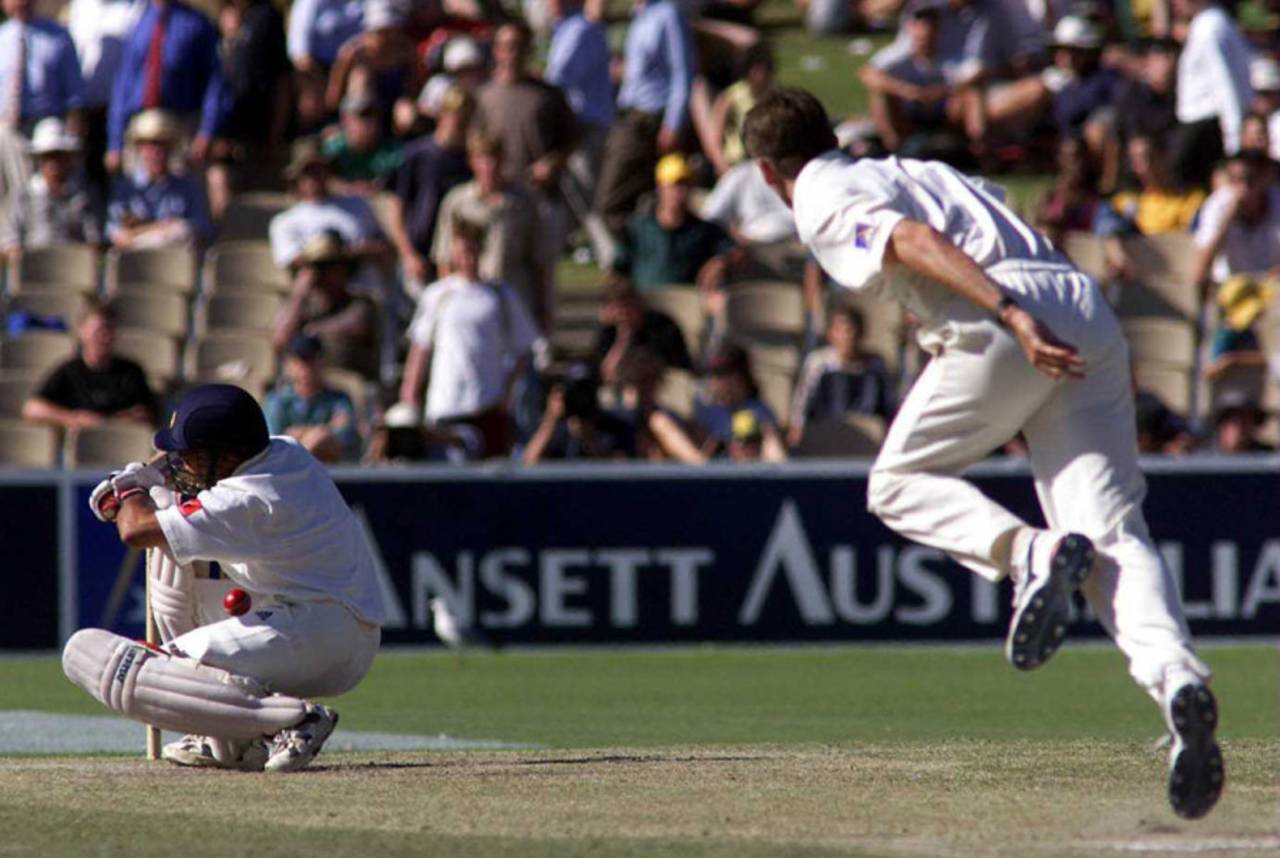Five memorable leg-before-wicket decisions
To mark the 10,000th lbw in Tests, a look back at such dismissals down the years that were controversial, historic and just plain funny

Glenn McGrath has Sachin Tendulkar lbw for a duck in Adelaide • Hamish Blair/ALLSPORT
Steve Waugh has set the field for a bouncer. There are men at short leg and leg gully as Glenn McGrath runs in at Adelaide Oval in December 1999. Sachin Tendulkar sees the ball land in the middle of the pitch and ducks side-on, getting really low in front of the stumps and turning his head away from the line of the delivery, as he tries to get under it. The ball does not rise high enough, though, and thuds into Tendulkar's left arm, just below the armpit. McGrath whips around to appeal for lbw and umpire Daryll Harper raises the finger, forever dividing the cricket world on whether that ball would have hit the top of the stumps or not.

Two balls remain in the Chennai Test of September 1986. The scores are level and India have a wicket in hand. Maninder Singh, the No. 11, pushes forward and slightly across at a delivery from offspinner Greg Matthews. A massive appeal follows and umpire V Vikramraju gives Maninder lbw to end a match in a tie for only the second time in Test cricket. Whether Maninder got an inside edge or not is hotly debated, but Vikramraju did not officiate in another international match.

Jim Laker took nine Australian wickets in the first innings at Old Trafford in July 1956; Tony Lock took the other, the third wicket to fall. In the second innings, however, Laker had nine out of nine and was on the cusp of making history. "England's only thought was victory," Wisden reported, saying there was no design to give Laker the record. "Lock repeatedly beat the bat, but it was not his match." At 5.27 pm, umpire Frank Lee upheld an appeal for lbw against Len Maddocks and Laker became the first bowler to take all ten in an innings.

Steven Smith was 2.8 metres down the pitch when the delivery from debutant left-arm spinner Keshav Maharaj hit his pad at the WACA in November 2016. Though the impact was in front of off and middle stump, Smith was so far down that most people thought he was safe when South Africa asked the question. Such appeals were just not usually upheld. Umpire Aleem Dar, however, gave the lbw, prompting Smith to use the DRS to refer the decision to the television umpire. Replays indicated that the ball would have clipped leg stump, which was enough for Dar's decision to remain unchanged. Though it did not look immediately out to the human eye, such lbws are increasingly possible with the use of technology.

Graham Thorpe was making a return to England's Test XI at Old Trafford in August 2000. He walked in at 17 for 2, and was facing Courtney Walsh. The first delivery seemed like a slow full toss but it dipped late and he lost sight of it. As Thorpe moved across his crease, he turned his head away from the approaching delivery as if to duck, and then just froze. The ball landed flush on his back boot in front of middle stump as he offered no shot. It was definitely one of the least controversial - but among the most unconventional - lbws in cricket.